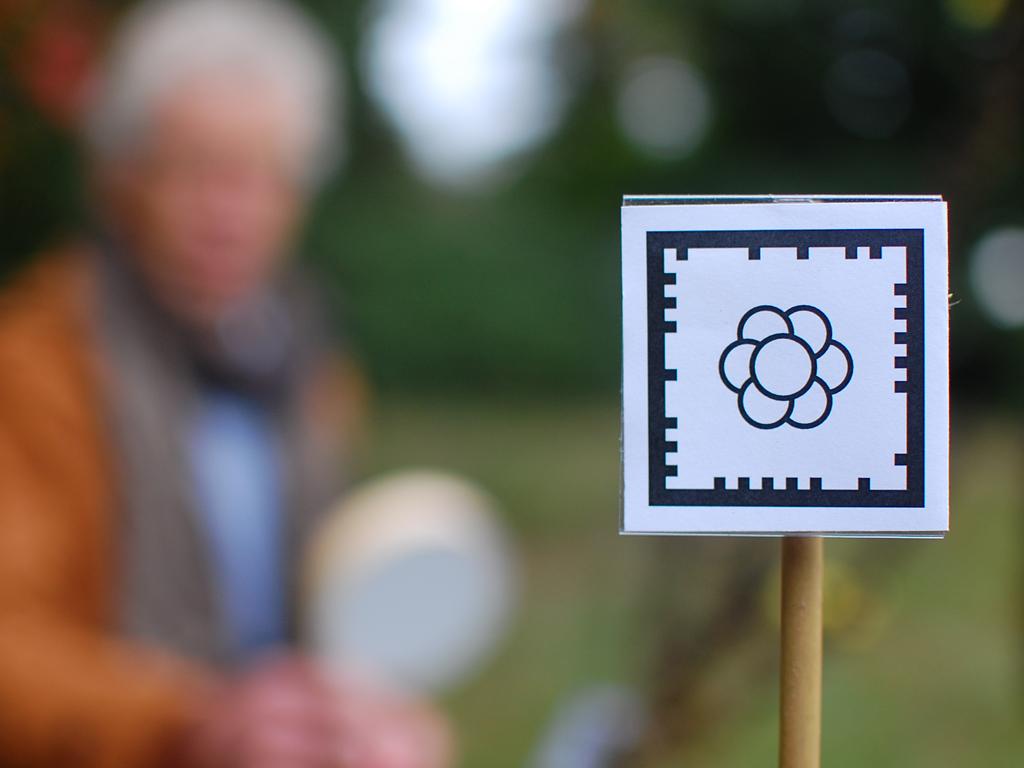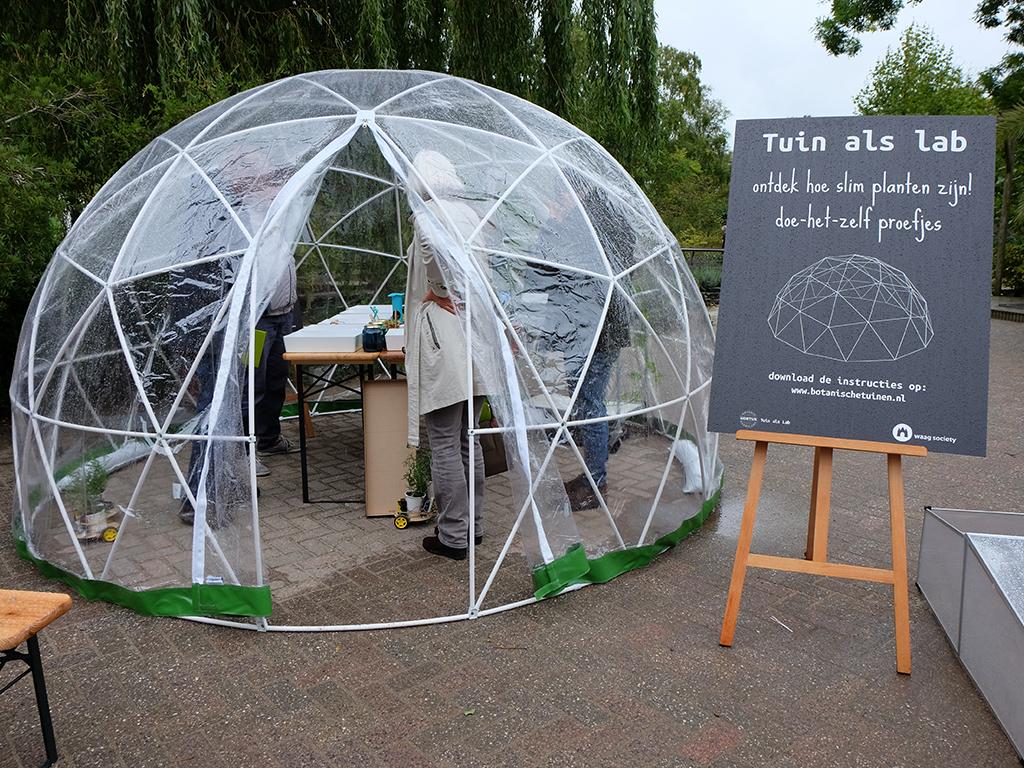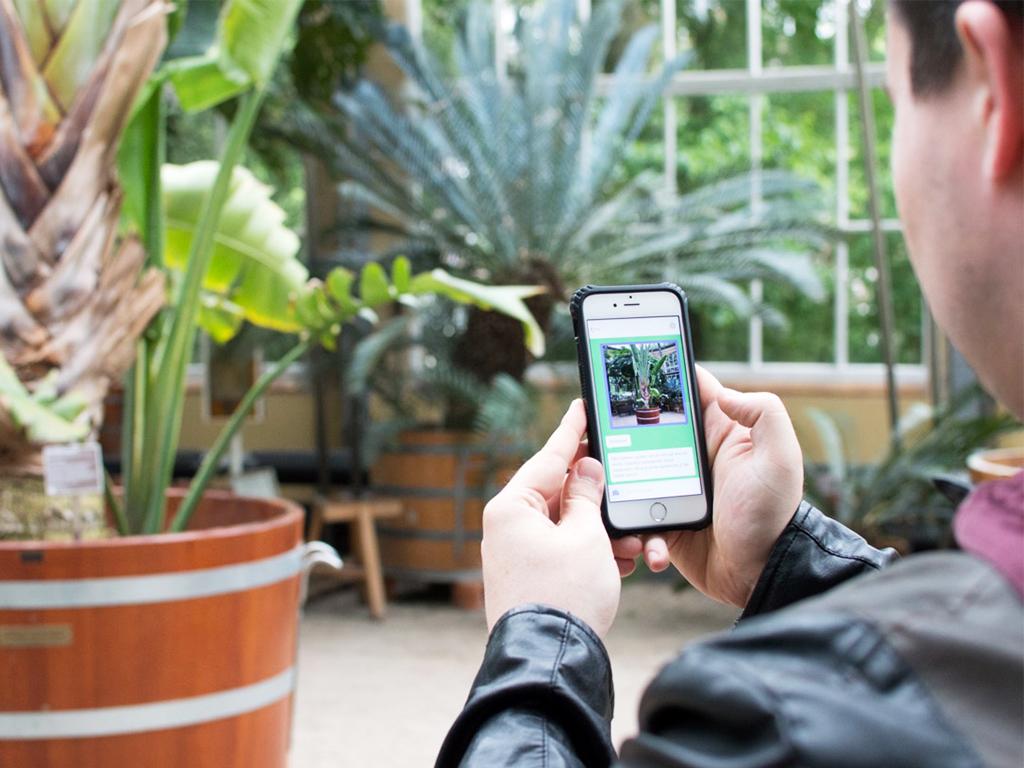The first laboratory in our project 'Plants for the future' with the Botanical gardens (NVBT) has ended. With 18 participants, from nine gardens, we have been busy during six weeks to think up new ways to share plant information with the public. We developed a first prototype which we tested on the last day with visitors and employees of other gardens. Nowadays many volunteers and guides tell the audience about the plants, but in the near future modern technology could assist them.
The developed prototype of the magnifying glass was received very well during the test. In fact, this laboratory was a rediscovery of this natural instrument for botanical research. It was remarkable that simply by using this form, a wooden frame, the connotation with smartphone technology completely disappeared. Some of the reactions were like "Although it is a technical thing, it is fun!" and "When can we start using it?".
The way you look at the world through a magnifying glass is different from the naked eye. It frames things: the research space that you zoom in on. You only will reach for the glass if you want to know more about your subject, and not only just to magnify the image. Ideally, it would also show you the roots below the surface, show the plant in bloom (also when it is not having flowers) or it clarifies the special leaf structure of a plant.
With the current prototype the user scans a marker. When recognized, and waiting for two seconds, the visitor can 'pick up' the story. This can either be a photo of the plant in a different season, the name, a video or a narrated story. By turning the glass, the story is dropped.

Evaluation of the concept
At the test at Hortus Arcadië in Nijmegen, the glass showed photos and audio fragments and directed the visitors through the garden. Navigation could be more explorative in the future. The glass could vibrate if you are near a story, and make it possible to follow any route through the garden. It could contain game elements, like gathering points within a certain timeframe.
In the morning we evaluated the concept with a group a small kids, in the afternoon we had a somewhat less playful audience. Visitors were equipped with the prototype and other NVBT members that did not join this first laboratory had a chance to experience the result. Reactions were mainly positive, although there were of course some issues that remain to be solved. The functionality was clear, even the three year old kids grasped it instantly.

Next steps
We are now going to find out how much time it would cost to develop this further, what functionality would be essential and of course how much this would cost. Than, we will park this first concept and will see what other great ideas will emerge from the next two laboratories.
This first experiment already had some ‘side effects’, like how the plant database should going to be build, where all plants will be stored at with their Latin name in combination with their stories. These need not to exist of words only, one can think of animations, photos, video and audio.
The next laboratory will start on 20 February 2014.


